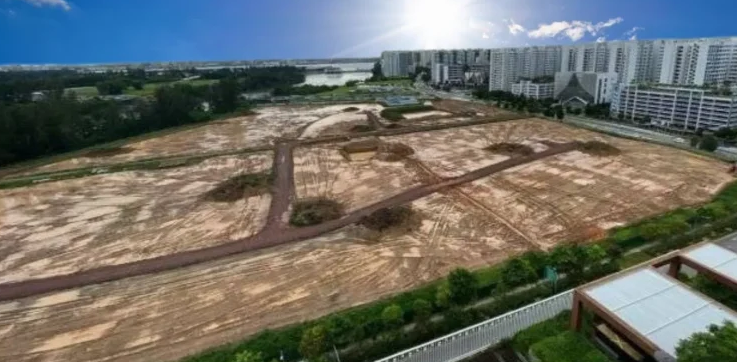As environmental concerns grow, the demand for sustainable practices has surged. Among these, earth control measures stand out as critical strategies. These methods help prevent erosion, manage soil stability, and mitigate the environmental impact of construction and agricultural activities.
In this article, we will explore the concept of earth control measures, their importance, and real-world applications. Additionally, we will discuss the challenges that may arise and practical solutions to overcome them. By understanding these techniques, industries can adopt better practices for land management and environmental sustainability.
What Are Earth Control Measures?
Definition of Earth Control Measures
Earth control measures refer to techniques used to manage and stabilize soil, prevent erosion, and protect the environment. They are essential in industries such as construction, agriculture, and mining, where land disturbance can lead to severe environmental issues.
Types of Earth Control Measures
- Soil Stabilization
Soil stabilization involves strengthening soil to support structures or prevent erosion. This can be achieved through the addition of stabilizing agents like lime, cement, or synthetic binders. - Erosion Control
Erosion control measures reduce soil displacement caused by wind or water. Common methods include planting vegetation, installing barriers, and creating drainage systems. - Sediment Control
Sediment control strategies focus on trapping or filtering soil particles that may enter water bodies. Techniques include silt fences, sediment basins, and sandbags.
Primary Objectives of Earth Control Measures
- Prevent soil erosion
- Enhance soil structure
- Reduce sedimentation in water bodies
- Support vegetation growth
- Protect construction sites and infrastructure
Importance of Earth Control Measures
Environmental Protection
Earth control measures play a vital role in protecting the environment. By preventing soil erosion and sedimentation, these techniques reduce water pollution, conserve biodiversity, and preserve natural landscapes.
Soil Health Preservation
Healthy soil is crucial for agricultural productivity. Earth control measures help maintain soil fertility, promote moisture retention, and prevent the loss of essential nutrients. In turn, this supports sustainable farming practices.
Infrastructure Stability
In construction, soil stabilization ensures the structural integrity of buildings, roads, and bridges. Earth control measures prevent landslides and foundation failures, reducing the risks of costly repairs or accidents.
Flood Prevention
Erosion and sedimentation can lead to clogged waterways, increasing the risk of floods. Earth control measures help manage water flow, maintain drainage systems, and reduce the likelihood of flooding in vulnerable areas.
Applications of Earth Control Measures
Agriculture
In agriculture, earth control measures are used to improve soil health and prevent erosion, especially on slopes or hilly terrains. Methods like contour plowing, terracing, and cover cropping are common. These techniques help retain moisture, reduce runoff, and protect crops.
Case Study: Cover Cropping in Agriculture
Cover cropping involves planting crops that cover the soil during off-seasons, preventing erosion and enhancing soil fertility. In regions with high rainfall, this method has proven effective in maintaining soil structure and preventing nutrient depletion.
Construction
Construction projects often disturb the soil, making earth control measures necessary to maintain stability and prevent erosion. Techniques like silt fencing, sediment traps, and retaining walls are used to protect construction sites from environmental damage.
Case Study: Retaining Walls for Soil Stabilization
Retaining walls are commonly used in urban development to hold back soil on slopes. By providing physical support, they prevent landslides and protect surrounding areas from erosion during construction.
Mining
Mining activities can cause significant land disturbances, leading to erosion and water contamination. Earth control measures in mining focus on land rehabilitation, using techniques like reforestation, terracing, and sediment control basins to restore the land post-extraction.
Case Study: Reforestation in Post-Mining Sites
Reforestation is a long-term earth control measure used in post-mining land rehabilitation. By planting native trees, mining companies help restore biodiversity, prevent soil erosion, and rebuild the ecosystem.
Urban Development
Urban development often involves altering landscapes, which can lead to increased erosion and flooding. Earth control measures like green roofs, permeable pavements, and bioswales are employed to manage water runoff and maintain soil health.
Case Study: Green Roofs in Urban Areas
Green roofs are an effective earth control measure in cities. By covering rooftops with vegetation, they absorb rainwater, reduce runoff, and provide insulation, contributing to sustainable urban development.
Challenges in Implementing Earth Control Measures
Lack of Awareness and Expertise
One of the major challenges in adopting earth control measures is the lack of awareness among stakeholders. Many land developers, farmers, and construction companies are unfamiliar with the benefits or implementation techniques of these methods.
High Initial Costs
Some earth control measures, such as constructing retaining walls or installing permeable pavements, involve significant upfront costs. While the long-term benefits outweigh these expenses, the initial investment can be a deterrent.
Climate Change Impact
Changing weather patterns, including extreme rainfall or prolonged droughts, can disrupt the effectiveness of certain earth control measures. Techniques that work well in one climate may fail in another, requiring adaptability and continuous monitoring.
Regulatory Compliance
Many industries are subject to environmental regulations that require earth control measures. However, navigating these regulations can be complex, especially for small businesses that may not have the resources to ensure compliance.
Solutions for Overcoming Challenges
Raising Awareness and Education
Educational programs can help landowners, contractors, and farmers understand the importance of earth control measures. Workshops, seminars, and government outreach initiatives can provide valuable insights into implementing these techniques.
Government Subsidies and Incentives
To offset the high initial costs, governments can offer subsidies or tax incentives for adopting earth control measures. This financial support encourages businesses and individuals to invest in sustainable practices without worrying about the upfront expenses.
Climate-Resilient Practices
Developing climate-resilient earth control measures ensures they remain effective despite changing weather patterns. This could involve using more durable materials, updating designs, or diversifying vegetation in reforestation efforts.
Streamlining Regulatory Processes
Simplifying the regulatory framework and providing clear guidelines can encourage more widespread adoption of earth control measures. Governments can also offer technical assistance to help businesses navigate environmental regulations.
Best Practices for Implementing Earth Control Measures
Site Assessment and Planning
Before implementing any earth control measure, it’s crucial to conduct a site assessment. This involves evaluating the soil type, slope, and local climate to determine the most effective strategy. Proper planning prevents issues like improper installation or ineffective techniques.
Use of Native Vegetation
When using plants for erosion control or reforestation, it’s best to choose native species. These plants are better suited to local climates and require less maintenance. They also support local biodiversity and provide long-term soil stabilization.
Regular Maintenance and Monitoring
Earth control measures require ongoing maintenance to remain effective. Silt fences need to be cleared of sediment, and vegetation should be regularly inspected for health. Consistent monitoring helps identify potential issues early, preventing larger problems down the line.
Integrated Approach
Rather than relying on a single method, an integrated approach combining multiple earth control measures often yields the best results. For example, using vegetation alongside structural measures like retaining walls provides both biological and physical erosion control.
Emerging Trends in Earth Control Measures
Sustainable Construction Materials
The use of eco-friendly materials like recycled concrete or permeable pavements is gaining traction. These materials reduce the environmental footprint of construction projects while contributing to effective earth control.
Technology-Driven Solutions
Advancements in technology, such as drones and GIS mapping, allow for more precise monitoring of land conditions. These tools help assess erosion risks, track soil stability, and inform more efficient earth control strategies.
Green Infrastructure
Green infrastructure, which incorporates vegetation and natural processes into urban planning, is becoming a popular earth control measure. Bioswales, rain gardens, and permeable pavements are examples of green infrastructure that mitigate runoff and improve urban ecosystems.
Conclusion
Earth control measures are essential for preventing soil erosion, stabilizing landscapes, and promoting environmental sustainability. From agriculture to construction, these techniques play a critical role in maintaining soil health and protecting water resources. Despite challenges like high costs and regulatory complexity, the long-term benefits make earth control measures an indispensable part of modern land management practices.
By adopting innovative strategies, raising awareness, and investing in sustainable infrastructure, industries can effectively manage land resources and mitigate environmental damage. The future of earth control lies in combining traditional methods with new technologies, ensuring a balanced approach to environmental conservation. For more info visit Techno Buzz.
FAQs
- What are the most common earth control measures in agriculture?
Common methods include contour plowing, terracing, and cover cropping. These techniques help retain soil, reduce erosion, and maintain moisture levels in the soil.
- How do earth control measures benefit urban areas?
In urban areas, earth control measures like green roofs and permeable pavements reduce runoff, prevent flooding, and improve air quality by introducing more vegetation into cities.
- What challenges do industries face when implementing earth control measures?
Industries often face challenges like high initial costs, lack of awareness, and regulatory hurdles when adopting earth control measures. However, government incentives and education can help overcome these barriers.
- Can earth control measures be used in mining?
Yes, earth control measures like reforestation, sediment control, and land rehabilitation are critical in restoring landscapes affected by mining activities.
- What role does climate change play in the effectiveness of earth control measures?
Climate change can alter the effectiveness of certain earth control methods. For instance, increased rainfall may require more robust erosion control measures, while prolonged droughts can affect vegetation growth used for soil stabilization.

